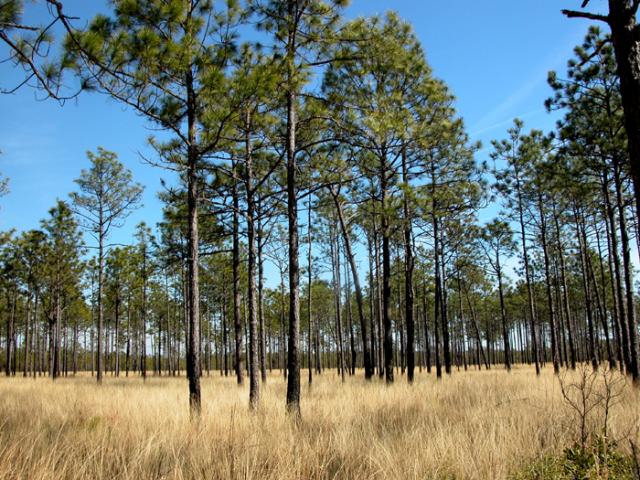Natural Communities of North Carolina
by Mickey Jo Sorrell, 2014.

A natural community is a distinct collection of plants and animals (and fungi and bacteria) associated with each other and with their physical environment. North Carolina harbors over 300 unique natural communities, which can be grouped into about 30 categories (listed below).
Natural communities consist of both biotic (living: plants and animals) and abiotic (non-living: soil and water) factors. Plants tend to locate where their needs for soil, water, and space are met. Animals follow similar needs, which include safety and a reliable food supply. The combination of these biotic and abiotic factors makes each of North Carolina’s natural communities unique.
Each natural community is most likely to be found in its preferred ecoregion – mountains, piedmont, or coastal plain – and its preferred circumstances – high and dry, low and moist, or a combination. It is North Carolina’s varied topography (sea level to tallest mountain on the east coast), soil (sand to clay to rock), and moisture (rivers, ocean, and rainfall) that allow for the rich biodiversity we enjoy.
Once you become familiar with a few of North Carolina’s natural communities you will notice them around your neighborhood and across the state. Some are familiar faces in many parts of eastern North America’s Temperate Deciduous Forest biome, while many can be found only in North Carolina. They are home to our native species and the building blocks of whole ecosystems that cycle nutrients and clean the water and air. Different natural communities can be found close together in the same landscape like distinct neighborhoods within a city.
Natural Communities of North Carolina
Spruce-Fir Forests
Grass and Heath Balds
Northern Hardwood Forests
Mountain Cove Forests
Piedmont and Coastal Plain Mesic Forests
Mountain Dry Coniferous Woodlands
Mountain Oak Forests
Piedmont and Coastal Plain Oak Forests
High Elevation Rock Outcrops
Low Elevation Cliffs and Rock Outcrops
Coastal Plain Marl Outcrop
Granitic Flatrocks
Piedmont and Mountain Glades and Barrens
Maritime Grasslands
Maritime Upland Forests
Dry Longleaf Pine Communities
Brownwater Coastal Plain Floodplains
Blackwater Coastal Plain Floodplains
Piedmont and Mountain Floodplains
Riverine Aquatic Communities
Mountain Bogs and Fens
Upland Seepages and Spray Cliffs
Piedmont and Mountain Upland Pools and Depressions
Coastal Plain Nonalluvial Wetland Forests
Pocosins - Peatland and Streamhead
Wet Pine Savannas
Coastal Plain Depression Communities
Natural Lake Communities
Maritime Wetlands
Freshwater Tidal Wetlands
Estuarine Communities
References:
Michael Schafale, Guide to the Natural Communities of North Carolina, 4th Approximation (North Carolina Natural Heritage Program, 2012)
David Blevins and Michael P. Schafale, Wild North Carolina: Discovering the Wonders of Our State's Natural Communities (Chapel Hill:The University of North Carolina Press, 2011)
B.W. Wells, Natural Gardens of North Carolina (1932, UNC Press, 2002)
Image Credit:
Longleaf Pine Savanna Natural Community, by Misty Buchanan, 2004
Subjects:
Authors:
11 February 2014 | Sorrell, Mickey Jo